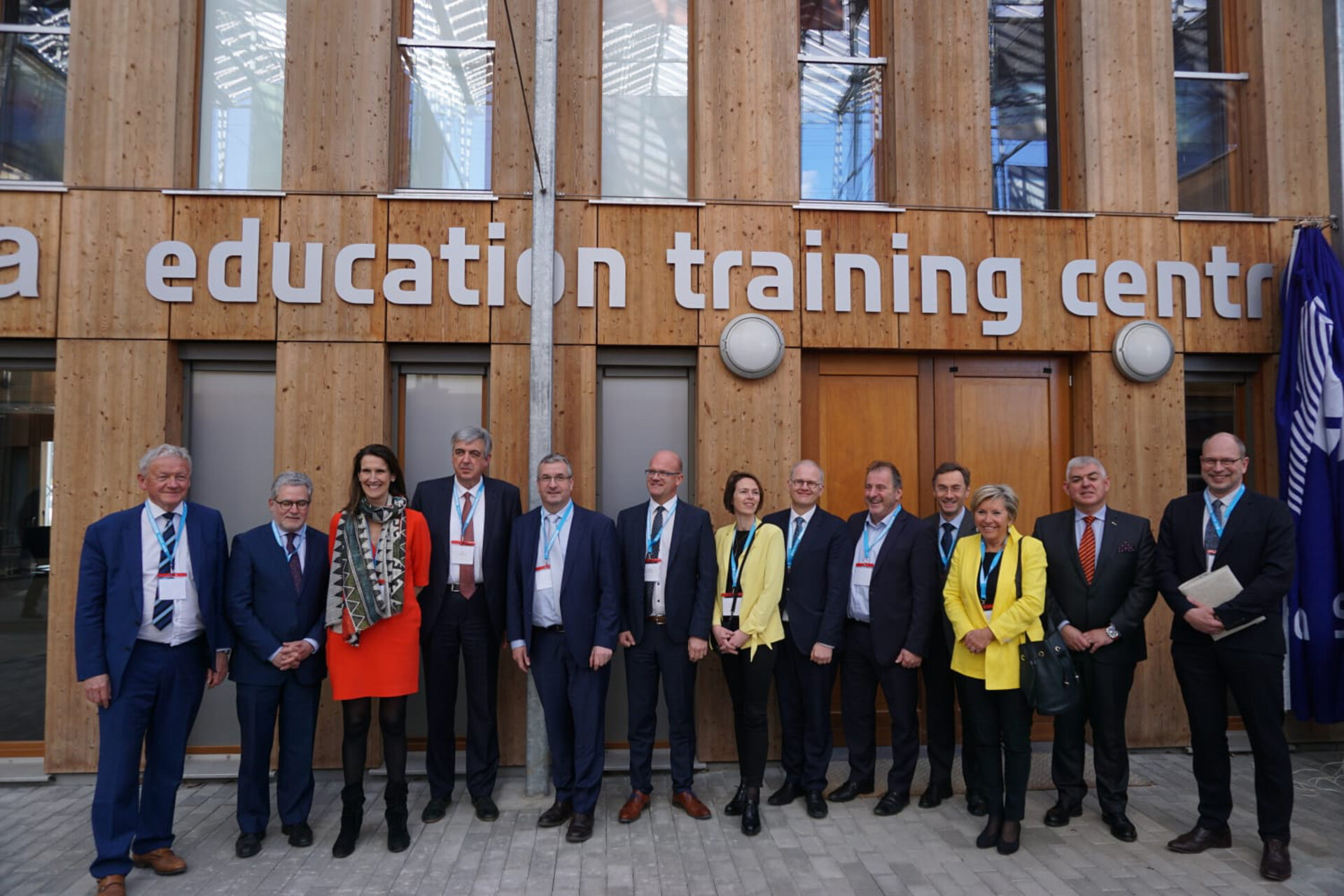Galaxia, a new boost for ESA Education
New Space, quest for innovation and integrated applications, new business models, global challenges: this is the scenario that the ESA Education programme is now even more equipped to address with the inauguration of Galaxia, the new permanent ESA training and learning facility in Belgium.
Galaxia, a part of ESA’s European Space Security and Education Centre (ESEC),is entirely dedicated to innovative training and learning programmes for school teachers and university students from ESA Member States, both in the form of innovative courses and meaningful practical experience.

Specific training programmes are designed and delivered by space and didactics experts to support young people’s development of the so-called 21st century skills – the set of knowledge, abilities and competences recognised at European level as necessary for the next-generation workforce, in the STEM and space sectors in particular.
“With the Galaxia infrastructures, the ESA Education programme has received a new boost,” says Hugo Marée, Head of the ESA Education Office. “These new facilities are already welcoming hundreds of students and teachers, and the demand is growing. The grand objective of our actions is not only to attract students to STEM careers and enhance their employability, but also to stimulate critical thinking, creativity, collaboration, innovation and entrepreneurship – core values and attitudes for the society of tomorrow.”
New state-of-the-art facilities
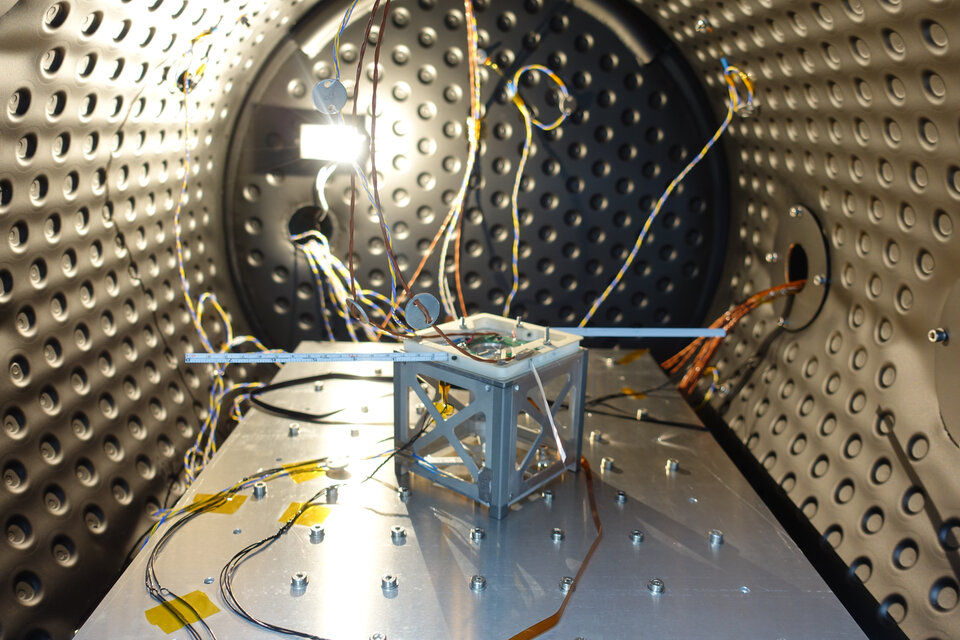
The training offered in Galaxia reinforces the ESA Education programme which, with its two pillars - the STEM programme for school level, and the ESA Academy programme for university level - is fully in line with the new Space Strategy put forward by Europe and with Space 19+, the programmatic evolution perspective of ESA.
Both contexts identify the need to invest in education to properly respond to the on-going socio-economical and societal changes, such as climate, resources, energy, health, security,safety, and so on. Since many of these issues can be addressed with space-based solutions, the ESA Education programme has gained a special role as an upstream enabler in stimulating job and sustainable growth, providing socioeconomic benefits, and inspiring and motivating the next generations.
“With our Education programme, we always look ahead,” added Hugo Marée. “Our current perspective is 2030, and we are preparing for it by trying to anticipate what will be the skills and the jobs required by then.”
The Galaxia education activities are delivered in state-of-the-art structures: the e-technology lab, the Training and Learning Facility, and the CubeSat Support Facility, all officially inaugurated on 29 March.
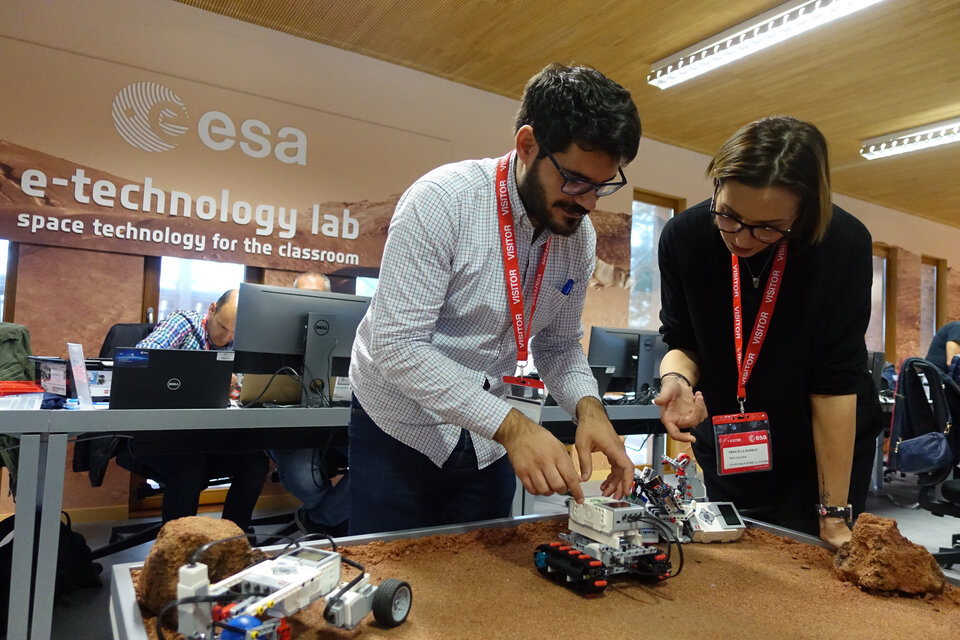
e ̵ technology lab
In the e-technology lab, primary and secondary school teachers are trained in the use of the space context to deliver their school science, technology and ICT curriculum. Active teaching and learning methodologies such as inquiry and learning by design are at the basis of the training which – among others – makes use of robotics, automation and programming tools.
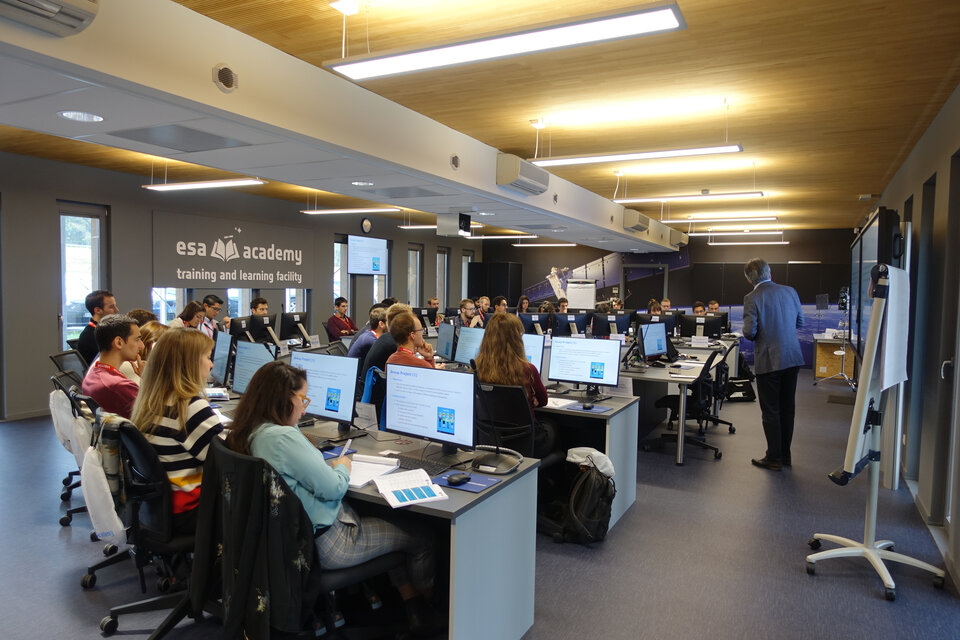
Training and Learning Facility
In the ESA Academy’s Training and Learning Facility - a training room and an educational Concurrent Design Facility (CDF) - university students attend 4- to 5-day training sessions, complementary to their academic education. The portfolio of training courses covers the areas of ESA expertise such as systems engineering, mission design, space law, standardisation, product assurance and safety, human space physiology, space spin-offs business, and more.
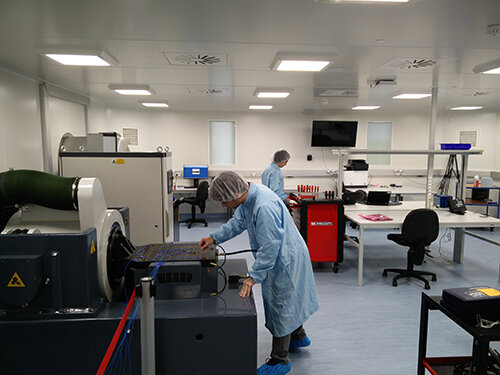
CubeSat Support Facility
The CubeSat Support Facility is an assembly integration and test (AIV/AIT) laboratory designed to support student teams participating in Fly Your Satellite!, the ESA educational CubeSat satellite programme. The facility consists of a cleanroom equipped with an electrodynamic shaker, a thermal vacuum chamber and additional test equipment. Here students are guided in the construction and testing of their small satellites, and can follow hands-on demonstrations of satellite integration and testing.
Note to editors: Education at ESA
Together with space science and technology, education is one of ESA’s core activities. It is of strategic importance to nurture and prepare the European workforce which the evolving space sector, and society at large, need to remain competitive and to overcome current and future societal challenges.
The ESA Education programme is built around two pillars:
- the STEM programme, including the Galaxia e-technology lab, targets primary and secondary school teachers and students. The programme offers classroom resources, school projects and teacher training delivered by ESA directly, for instance through the e-technology lab, and through ESA’s ESERO national offices;
- the ESA Academy, including the Galaxia Training and Learning Facility and the CubeSat Support Facility, is ESA’s overarching programme addressed to university students. It consists of a wide portfolio of learning and training opportunities that range from hands-on small-scale space projects (satellites or experiments) to training courses, the latter delivered at the Galaxia Training and Learning Facility.
Learn more (www.esa.int/education).


